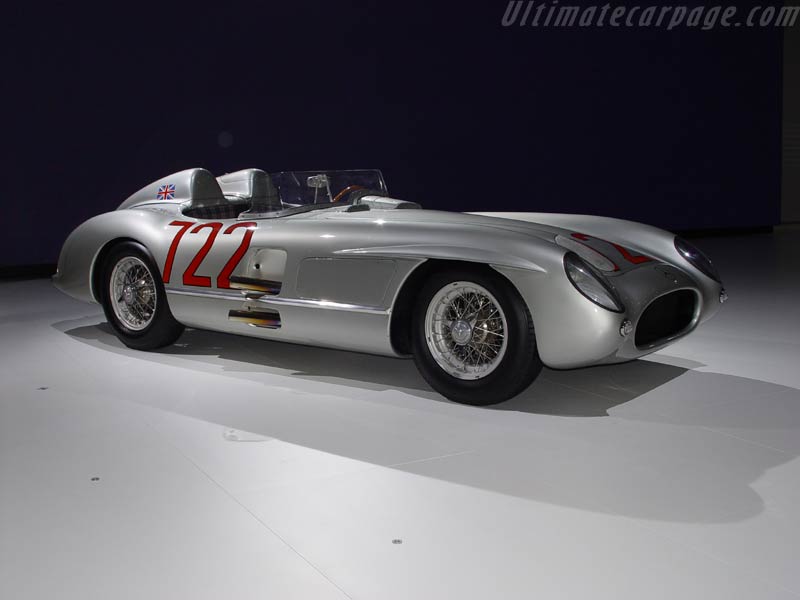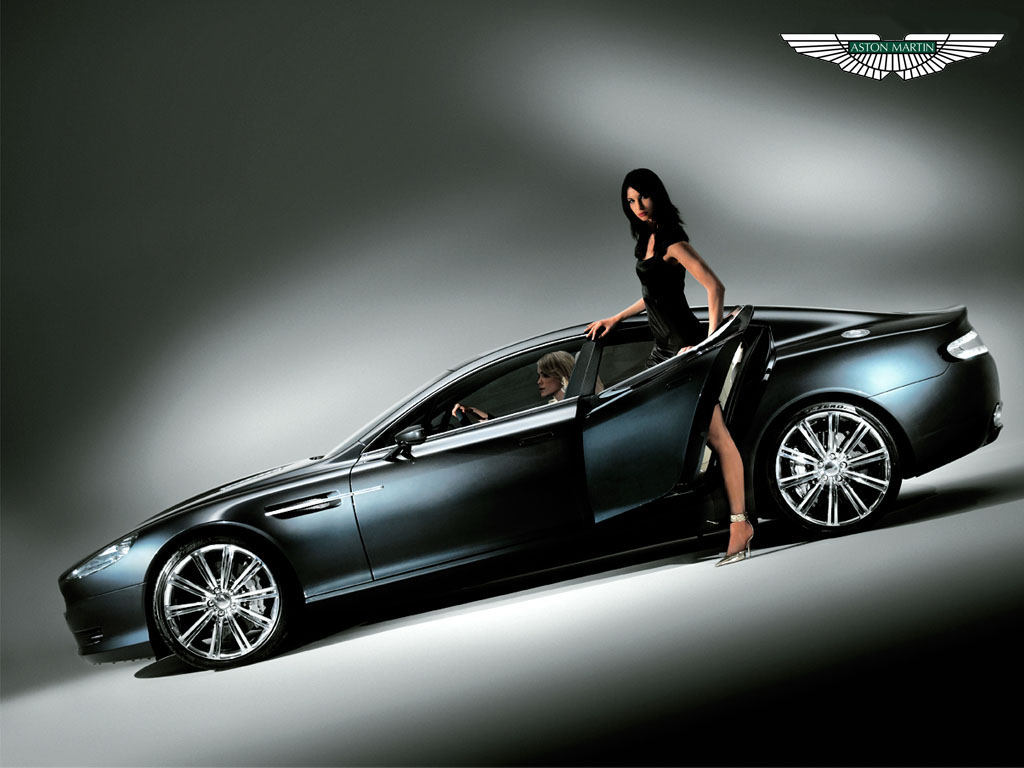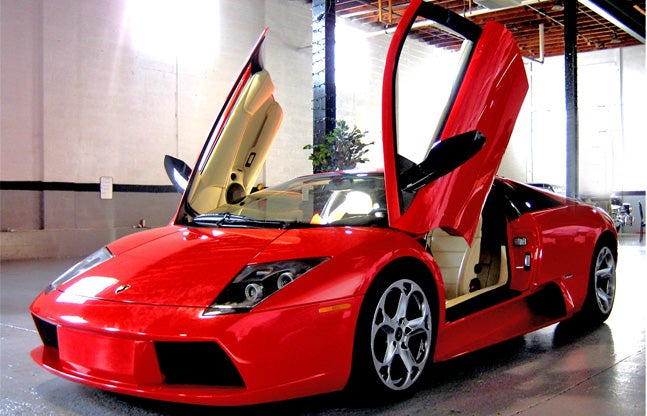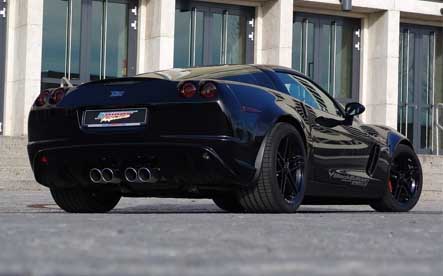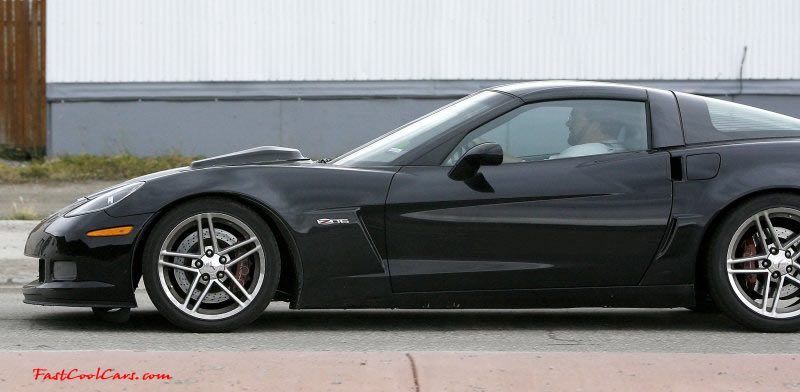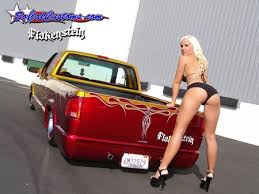|
|
|---|
Saturday, November 28, 2009
ferrari 612 scaglietti
ferrari 612 scaglietti

ferrari 612 scaglietti pictures

ferrari 612 scaglietti wallpapers

ferrari 612 scaglietti

The Revolutionary Hybrid Car

The difference between a standard car and the Hybrid car is that the engines run off rechargeable batteries and gasoline opposed to just gasoline or diesel. Hybrid cars can reduce smog up to 90% and can offer much higher fuel economy against a normal car engine. Eventually the idea is that everyone will drive a Hybrid car providing fuel efficient transportation which will effectively reduce pollution from car fumes alongside decreasing the worry for rising gas prices.
Hybrid car engines run an electric motor when accelerating during this time the gasoline side of the engine is shut down. When the batteries need to be charged again the gasoline engine wills start again. When the hybrid car brakes it usually will return to the electric motor side because of the lower amount of power needed when braking for an extended amount of time.
Hybrid cars are a wonderful concept for our environment; they can effectively get 55-60 miles per gallon over inner city driving. This is actually more than three times better then many of today's economical SUV's! Another impressive factor is against the new electric cars in that the Hybrid car does not require limited use and there is no need to recharge their engines. Electric cars require recharging anywhere from 50-100 miles. The hybrid engine has the ability to recharge itself with the gas side of it. This means that long distance travel is never a worry for the fuel efficient auto enthusiasts with today's hybrid motors. Also a massive disadvantage the electric car has is performance. Most electric cars are only able to reach a top speed of around 60 miles per hour whereas the hybrid engine will perform just the same speeds as the standard cars.
If you are looking for more information on this cutting edge car visit your local dealer or you can research a large amount of information by searching online.
Terry Metcalfe writes on behalf of the OK Driving School specialists in intensive driving courses and driving course theory tests.
The History of the Iconic Chevrolet Camaro

There have been plenty of American-made muscle cars over the years, and one of the perpetual favorites in that elite group is the Chevrolet Camaro. Although its original production run ended official in 2002, popular demand revived the model and the 5th generation Camaro began production in 2009. Here's a thumbnail sketch of the history of this American classic.
When the Ford Mustang took America by storm in the early 1960's, Chevrolet saw a need to reply in kind. The result was the introduction of its Camaro in 1967. The name for the model has no real literal meaning, but its name begins with a "C" like all Chevy models of at that time and the name's root suggests friendship (as in Cam-araderie). It was technically classified as a "compact car" though the Camaro and its contemporaries began being known as pony cars, muscle cars, etc.
The Camaro captured the American imagination but it was the 2nd generation design introduced in 1970 (and continuing production for another 11 years!) that became an iconic part of the United States motoring scene. Souped-up models became popular for street and closed-circuit racing: a tradition that continues today.
When production ceased in 2002, the stage was already set for the revival of the Camaro. Racing enthusiasts today still favor this model for drag racing, and it never lost its iconic status, appearing in movies such as The Transformers. Thanks to its reintroduction, 2010 Camaro performance cars are set to hit the tracks again in the GT class of the Grand Am Road Racing Championship.
The Camaro is an American classic whose lasting popularity refuses to wane.
For those people who want more than just another cookie-cutter car off the assembly line such as 2010 Camaro performance, Fastlane Inc is the answer. Find out more details at http://www.fastlaneturbo.com/. Ryan Coisson is a freelance writer.
Friday, November 27, 2009
Top 10 Searched Hot and Cool Cars this 2009

1. 2010 Chevrolet Camaro
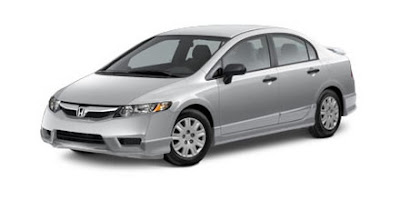
2. 2009 Honda Civic
3. 2009 Ford Mustang
4. 2009 Mini Cooper
5. 2009 Smart ForTwo
6. 2009 Honda Accord
7. 2010 Dodge Charger
8. 2010 Dodge Challenger
9. 2009 Jeep Wrangler
10. 2009 Mazda 3
Top 5 Best Convertibles this 2009

1. 2009 Lamborghini Gallardo

2. 2010 Ford Mustang
3. 2009 Lamborghini Murcielago
4. 2010 BMW 6 Series
5. 2010 Ford Shelby GT500
Thursday, November 26, 2009
Fiat 500 to launch in the U.S. with Abarth performance model

With every passing week comes another report of how Fiat and Chrysler will be sharing products. If it's not Chrysler-badged Lancias then it's Lancia-badged Chryslers or an Alfa-badged Jeep. As for the Fiat division itself, the emerging strategy appears to be to bring the 500 retro-mini over and set it up as something of a brand of its own, with sights set squarely on BMW's Mini and forgoing the rest of the Fiat line-up.
Earlier reports indicated that we'd be getting four versions of the 500 Stateside, including basic hatch, cabrio and upcoming wagon in addition to the Abarth performance model. But rather than start with the basics and work its way up, or launch the entire range simultaneously, the latest news suggests that Fiat is preparing to hit U.S. soil running by starting off with the 500 Abarth. According to WardsAuto, the Fiat 500 Abarth – complete with 133-horsepower turbocharged four, upgraded suspension and all the sporty touches that make an Abarth an Abarth – will arrive at Chrysler dealers in 2011 with an $18,000-$19,000 price tag. Fiat reportedly targets selling 20,000-25,000 units of the 500 Abarth in the first year.
By the time the 500 Abarth arrives, we'll likely be looking at an updated version with even more oomph. With the standard hatch, the open-top 500C and the upcoming Gardiniera wagon expected to follow, there's no telling if the initial model will be the only Abarth on offer, or whether Fiat will follow up with the even hotter EsseEsse version (pictured above), racing models like the Assetto Corse or R3T, an Abarth convertible or specials like the 695 Tributo Ferrari or an Opening Edition of our own.
[Source: WardsAuto.com]
The Maruti Suzuki Zen Estilo LX

Maruti Suzuki Zen Estilo LX is a small size car with big heart. This car is nothing less than utopian car for Indian car aspirants. Small, fuel efficient and convenient as well - this car can be easily termed as wishful car in its category.
Key Features
As said before Maruti Suzuki Zen Estilo LX is a car with big heart. Just have a glance at its performance. Giving you mileage of 17.7 km per liter and 13.6 km per liter as overall mileage, this small size definitely lends you par excellent fuel efficient performance in its class. Now, let us concentrate on other aspects of performance. The torque power and maximum speed you get are 84 Nm at 3500 rpm and 148 Km/Hour which is pretty impressive considering that it's a small size car. Maruti Suzuki Zen Estilo LX will be a quite handy car if you are someone who constantly drives on bumpy and bad roads. This is because Maruti Suzuki Zen Estilo LX has a very ground clearance and superior suspension capabilities.
Design
Maruti Suzuki Zen Estilo is a smart, elegant and contemporary car. The exterior styling combines drop-gorgeous front fascia that is stunning and has sleek lines. The car has been designed keeping in view the latest trends. The tail lamp cluster is an excellent design, making good use of curves, lines and space. The B and C-pillars, disguised in black, go well with tinted glasses. Now let us go into the interior. The interior is quite upscale and plush. The dual-toned beige color interiors give the impression of a luxurious sedan. The dash design is again appealing; the silver trim on the beige color console looks quite stunning. The instrument cluster, the AC and the music system on the console are properly placed, adding convenience. The seats are ergonomically designed with shoulder support and adjustable head restraints for comfort.
Cons
Maruti Suzuki Zen Estilo has a very poor built - isn't very resilient or robust. Air bags are also optional in this car.
Conclusion
There are many things going for Maruti Suzuki Zen Estilo. It has a drop dead gorgeous styling and has a very powerful engine in its class.
for detail on Tara Tiny logon to -http://www.naaptol.com/
Devika Rajpali is a well known author and has written articles on Hyundai Santro Xing, Motor Bikes , Automobiles , Maruti Suzuki Alto LXi - BS III , online shop and many other subjects.
Tuesday, November 24, 2009
First Drive: 2010 Lincoln MKT

In 1998, Lincoln's overall sales made it the number one luxury brand in America. The Navigator, Continental and Town Car weren't exactly world beaters – let alone an enthusiast's cup of Darjeeling, but the typical Lincoln buyer was getting precisely what he or she expected: soft, cozy, squishy cruisers for soft, squishy old people. In the decade that followed, Ford's U.S. luxury arm has seen about as much success as a modern day typewriter salesman. Mistakes have been made. The Blackwood. The Aviator. The LS. All big-time blunders – tragically so with the Romulan cloak-inspired design of the LS, as it was a pretty good car under that anonymous sheetmetal – and all consigned to history.
It's easier than ever to tell a Lincoln from 100 yards out.
Fast forward to 2009, and yesterday's gaffes have been replaced with a group of indecipherably-named vehicles that don't seem to be catching the eye of the car-buying public. The MKS, MKZ and MKX are nice enough, with tons of tech and luxury amenities, but America's buying public doesn't seem impressed.
Admittedly, the biggest reason Lincoln was kicking ass on the luxury sales charts last decade was the Navigator. It was big, it could haul heavy loads and it had an over-the-top style that affluent Americans were looking for at the time. Today's Lincoln lineup continues to feature the Navi, but the hefty SUV is no long the toast of the town and its massive girth and lousy fuel economy are borderline synonymous with PR losers like global warming and dependence on foreign oil. The 2010 Lincoln MKT is sized to replace the Navigator, but with the improved packaging, comfort and efficiency of a car-based crossover. We exercised a pair of EcoBoost-powered luxury barges through the twists and turns of Ann Arbor, Michigan to answer one simple question: does the 2010 Lincoln MKT have what it takes to become the spiritual successor to the Navigator and help shake the Lincoln brand of its decade-long sales slump?
For every vehicle that Lincoln has in its lineup, there is a mechanically identical Ford on the more pedestrian side of the gene pool. The MKT is no different, sharing its platform and powertrains with the boxier Ford Flex. To distinguish the two CUVs, Ford is employing a "differentiated top-hat strategy." That means precisely zero sheet metal and fewer interior parts are shared between the two models. That's a terrific change of pace for Dearborn's luxury stepchild, as the days of Lincolns that looked way too much like their Ford siblings are still fresh in our minds. Heck, the "in showrooms now" MKX is still a dead ringer for the Ford Edge, so thorny reminders of its blue collar heritage are still alive and well within Lincoln's current lineup.

When we first laid eyes on the concept version of the MKT at the 2008 Detroit Auto Show, we were surprised by its odd-looking aesthetics. The tintless glass roof made the massive crossover concept appear to suffer from male pattern baldness, while the exaggerated D-pillar was overshadowed by a bulging hindquarters that made J-Lo's booty look benign. Fortunately the production MKT manages to be better looking than the concept, but we wouldn't exactly say Lincoln's new Freightliner is a looker, either.
Up front, Lincoln turned up the design DNA with its new corporate mug. The split waterfall grille is divided by the four pointed star, and whether you love or loathe Lincoln's new face, it's hard to argue that it's now easier than ever to tell a Lincoln from 100 yards out. The front end rounds nicely into the MKT's overtly chiseled belt line, which moves across the profile undisturbed until it ramps up at the rear wheel.


When viewed from behind, the story gets better, as the smooth transition from the roof to the minimalist bumper and interesting, if over-the-top, tail lamps shows that this Lincoln looks best when it's ahead of you. That rump, by the way, was forged with magnesium and aluminum, shaving 22 pounds from the MKT's 5,000-pound curb weight. Sure, Lincoln's newest crossover is a bit homely, but there isn't exactly a plethora of visually stunning luxury family haulers on the market, either.
The MKT can be had in several interior combinations, all of which include a third-row seat. Our Ecoboost-powered test vehicle came equipped with the $4,000 Spec 201A package, which includes Ford's excellent Travel Link navigation package, chrome 20-inch alloys, a panoramic moonroof and second row captain's chairs that mirror the excellent seats in the front row. The third row looks to be about the same size as its Flex sibling; just big enough for a couple of amiable teenagers.

With all rows upright, there is 17.9 cubic feet of space aft of the third row, but available cubes jumps all the way up to 75.9 when the second and third row seats are stowed. Spec 201A also includes a compressor-powered mini-fridge between the second row seats; a feature that MSRPs for $895 as a stand-alone option. The fridge can hold all of seven cans (or about three water bottles) of cooled refreshment, and it can freeze ice in half the time of your Maytag – a good thing considering it costs as much as the appliance in your kitchen.
Behind the wheel, we were immediately presented with the thick, leather-wrapped steering wheel with a real "hold me" feel. Beyond the tiller are Lincoln's corporate white-on-black gauges, which are simultaneously stylish and easy to read. The supple seating surfaces are matched with equally impressive armrests at the door and the center console. The general largesse of the MKT is also evident in the cockpit, as both leg room and hip clearance is plentiful, even for the widest of Autobloggers.




When it's time to take off, the MKT starts with a touch of a button (doesn't everything), bringing Ford's newest powertrain to life. The twin turbocharged 3.5-liter EcoBoost V6 boasts 355 horsepower and 350 pound-feet of torque from 1,500 RPM all the way to 5,250 RPM, resulting in healthy, lag-free acceleration in almost any situation. Ford's claim of the EcoBoost V6 delivering the power of a V8 with the fuel economy of a six-pot are born out through the numbers, returning an EPA-tested 16 MPG in the city and 22 MPG on the highway.
To properly show off the capabilities of the MKT's twin-boosted powerplant, Lincoln provided a V8-powered Audi Q7 to compare and contrast. The Q7's 4.2-liter powerplant flexes its muscles to the tune of 350 hp and 325 lb-ft of twist, similar numbers to the MKT, yet the four-ringed crossover manages only 13/18 EPA numbers, or four fewer highway mpg than the Lincoln. The MKT is also a bit friendlier to the environment than the Q7, as Lincoln claims 19 percent fewer CO2 emissions. When driving the vehicles back to back, the MKT felt significantly more powerful than the 400 pound-heavier Audi, as the Super CUV went from zero to cruising speed with more authority, while providing more punch when accelerating from steady speeds.

The EcoBoost V6 sounds good, too, with a quiet roar on heavy acceleration, and the MKT doesn't just win in terms of power, either, as the large crossover proved to be more agile in the curves while sporting a more impressive, quieter cabin. The Q7 felt tank-like in comparison to the longer, lighter MKT, though the Audi did supply more steering feedback and confidence-inspiring braking compared to the MKT's somewhat numb wheel and spongy stoppers.
Despite the MKT's fairly impressive performance chops, this three-row crossover is still at its best when cruising, proving flat out comfy in every environment, with a plush, bump-soaking ride, a pristine THX sound system and terrific ride height and visibility. During our road trip we were able to hold conversations in muted tones thanks to laminated glass and sound deadening insulation. We did detect some minor road noise emanating from the spanking new Goodyear radials, but the back roads we traversed could be at least partly to blame for the intermittent issue.

With the 2010 Lincoln MKT, the Blue Oval appears to have a very competent luxury cruiser that can stand up to the competition in terms of performance, efficiency, technology and luxury amenities. But while we enjoyed our time behind the wheel, we still don't see Lincoln's new crossover as being the answer to Ford's prayers. The MKT may have the size and luxury to replace the Navigator, but despite its assertive love-it-or-hate-it design, it just doesn't have that "King of the Road" swagger that made Lincoln's first SUV a smash hit in the urban jungle. The MKT is most certainly a fine entry in the large luxury crossover market, though, and that might be all that's needed to keep Lincoln buyers in the family when the time comes to trade in their aging Navis.
[Source: Autoblog]







